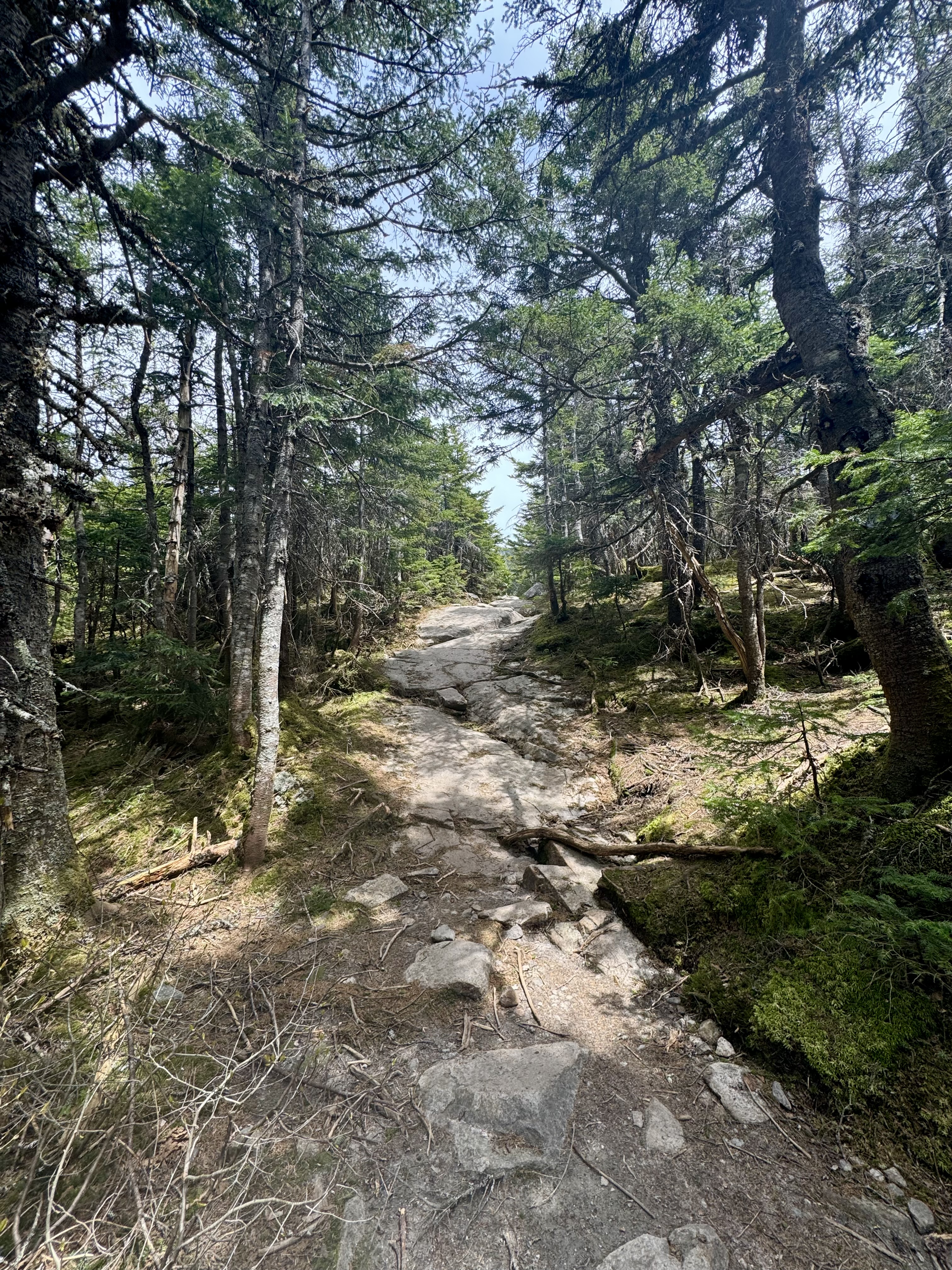There is no one “right” way to hike and so on any given mountain you’ll see people that clearly have different goals. Hiking on the same exact trail you may see someone with Hoka runners, nothing on their back, water bottle strapped to their hand, booking it and another hiker with a full Osprey bag, trifold sit mat attached to the exterior, ripping into a peanut butter and jelly and ready to sit and watch the views for an hour. People come with families, pets, large groups, and everything in between. Your fellow trail-goers might have the goal of setting a mountain record or maybe they’re just spending some quality time outdoors.
I’ve previously mentioned how hiking isn’t ridden with formal etiquette like other hobbies which makes it approachable. There are some things you can keep in mind though to maximize everyone’s happiness on our network of shared trails.
- This first rule is the only one that’s an official rule of the National Park Service: Yield to hikers traveling uphill. Honestly, not many people really know this, so if you are traveling uphill and are on a roll feel free to keep plowing along and throw in an “excuse me” and “thank you” to any hiker you’ve forced to the edges.
- Now, in contrast to that first, official rule: Yield to runners in whatever direction they’re going. I usually assume they’re going for a time or a speed goal so whether they’re traveling uphill or down, I always yield to runners. In the same vein, if you are trail running and would like to violate the official yield rule, feel free to should out an “excuse me” and a “thank you” to anyone you blow by on your descent.
- Keep an eye and an ear out for faster hikers. If someone has suddenly come up from behind then that means they’re moving faster. The amount of times I’ve experienced fellow hikers turn around to see what they heard (me approaching rapidly) and then proceed on hiking is baffling. If you didn’t see the approaching hiker at the trailhead and they’re now on your tail, you should yield to the evidently faster party.
- Have control of your group (and parents, this also means have control of your kids). If you happen to be your group’s caboose and are the first to intercept hikers approaching from behind, it is your responsibility to shout out to your group or start a game of telephone which will ultimately result in the entire group moving to the side of the trail. It’s tiresome and unnecessary for a passing hiker to have to be slowed down and end up doing a yield-tango with each individual member of a group. This is especially awkward when young kids are involved. I don’t want to be responsible for breaking up a group on a narrow trail such that parents in the back now can’t even see their kids ahead of them.
- When appropriate, yield to hikers with pets even if they’re on their descent. Hiking with a dog on a leash should be, for a well trained dog, a safe exercise but on especially steep sections the dog wants to get down safely and easily and sometimes this means choosing different footholds and pace than their human counterparts. Hiking with pets on a leash can be a balancing act and down right risky when the trail gets steep so I generally yield to anyone with a dog on a lead and let them have as much room as possible to maneuver down the slope.
The one theme here among all others is communication. Communicate with your fellow trail-goers kindly, swiftly, and succinctly. Know that everyone is out there with purpose and wants to make the most of those precious moments out there in the mountains.
